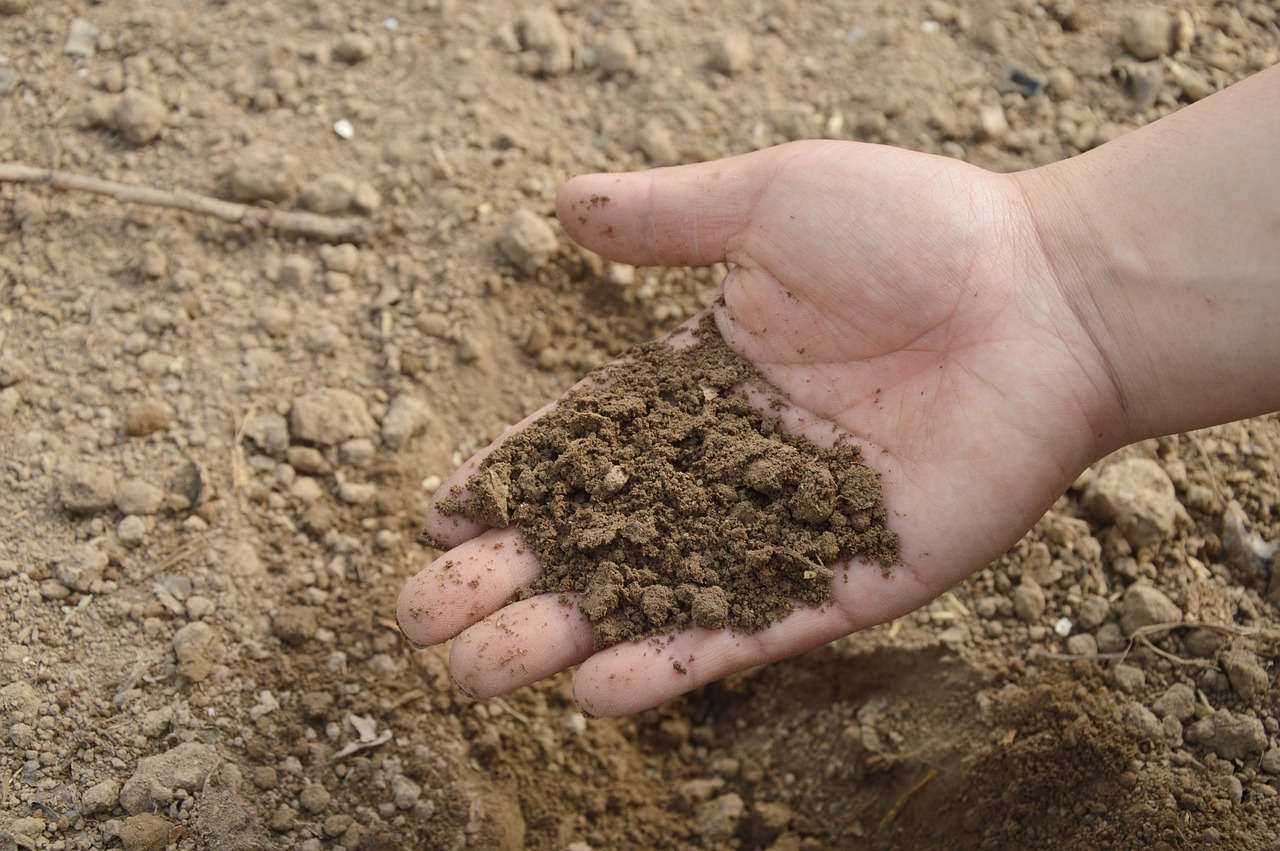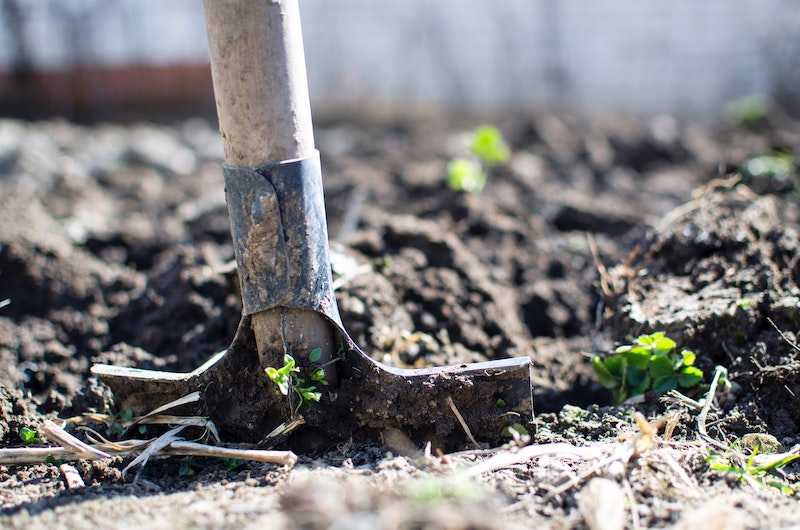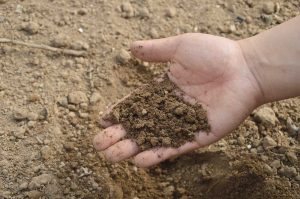Enhancing soil quality is a crucial foundation for achieving optimal plant growth and sustainable agricultural productivity. Healthy soil serves as the primary source of essential nutrients, water retention, and structural support for plants, making it an indispensable element in any farming or gardening endeavor.
Understanding the complex interactions between organic matter, minerals, microorganisms, and environmental factors allows for the creation of a balanced ecosystem that promotes fertility and resilience.
A well-maintained soil environment not only improves crop yields but also contributes to long-term sustainability by preserving biodiversity and reducing the need for excessive chemical interventions.
Focusing on soil health creates a more stable foundation for plants to thrive, ensuring they can withstand environmental stresses and grow with greater vitality over time.
Read Also : 10 Effective Tips for Managing Soil to Maximize Agricultural Yields
How to Improve Soil Quality

Here are ways to improve soil quality for plants to make them more fertile, which can be applied sustainably to support healthy and productive plant growth:
1. Regularly Add Organic Matter
Organic matter plays a vital role in building soil fertility, as it improves soil structure, making it looser and easier to cultivate.
Adding materials such as manure, plant residues, or humus enhances the soil’s water retention capacity, ensuring that plant roots receive optimal water supply. The carbon content in organic matter also supports the life of soil microorganisms, ultimately enriching the availability of natural nutrients.
The presence of organic matter increases the soil’s cation exchange capacity, making nutrients more available to plants and less likely to be washed away by rain. Improvement of soil texture from organic matter also reduces soil compaction, allowing roots to expand more extensively and absorb nutrients efficiently.
The decomposition of organic matter by soil microbes produces various beneficial compounds, such as humic acid, which helps improve soil bonding.
Continuous use of organic matter maintains a balanced microbial ecosystem that supports plant growth. The contribution of macro and micronutrients from organic matter makes the soil richer in nutrients without excessive reliance on chemical fertilizers.
Soils that receive regular organic inputs have more stable nitrogen, phosphorus, and potassium levels, supporting both vegetative and generative plant growth. Sustainable application of organic matter also aligns with environmentally friendly farming practices, focusing on maintaining soil health in the long term.
2. Use Balanced Natural Fertilizers
Natural fertilizers offer the advantage of releasing nutrients slowly, reducing the risk of over-fertilization that can damage the soil.
Using natural fertilizers such as compost, green manure, or animal manure adds organic matter and improves soil structure. The nutrient content in natural fertilizers is also more balanced compared to synthetic fertilizers, which tend to provide excessive amounts of specific elements.
Adding natural fertilizers creates favorable conditions for microorganism growth, allowing mineralization to occur effectively and producing nutrients that plants can easily absorb. Improving soil health with natural fertilizers also helps plants withstand environmental stresses such as drought or disease attacks.
The consistent use of natural fertilizers reduces dependency on chemical fertilizers, which over time can degrade soil quality. Nutrients from natural fertilizers are more stable and long-lasting in the soil, providing plants with a continuous nutrient supply.
Natural fertilizers enrich the topsoil layer, improving fertility and accelerating the recovery of damaged land. Adding various types of natural fertilizers also ensures a more comprehensive range of nutrients, fulfilling plant needs from multiple growth aspects.
Applying natural fertilizers not only enhances land productivity but also supports sustainable farming practices that preserve the ecosystem.
3. Practice Regular Crop Rotation
Crop rotation has a positive impact on soil health by breaking the life cycles of pests and diseases that often attack specific plants.
Alternating different types of crops in the same field prevents soil exhaustion from repeated nutrient absorption by the same plant group.
The rotation system also helps improve soil structure, as different plant roots have varied effects on soil texture. Legume crops, for instance, can fix atmospheric nitrogen, enriching soil nutrients for subsequent crops. Crop rotation minimizes the accumulation of soil pathogens and reduces the need for pesticides.
This practice also prolongs the productive life of the soil by reducing dependency on a single type of fertilizer or cultivation method.
Alternating crops promotes biodiversity in soil biomass, increases microbial activity, and optimizes nutrient cycling. Another benefit is improved soil water retention, as diverse plant types provide better protection against erosion.
Implementing well-planned crop rotation enhances overall yields by maintaining soil health and productivity. Such strategies contribute to the long-term sustainability of agriculture.
4. Apply Composting Techniques for Fertilization
Compost is an effective and affordable source of nutrients to enhance soil quality. The composting process utilizes organic waste such as leaves, straw, or food scraps to produce nutrient-rich material ready for use as fertilizer.
Nutrients in compost are released gradually, reducing the risk of nutrient overload and soil contamination. In addition to adding organic matter, compost improves soil water-holding capacity, helping plants withstand dry conditions. Compost significantly enhances soil porosity, allowing plant roots to breathe effectively.
The microorganisms present in compost enrich the soil ecosystem, creating an environment conducive to plant growth. The decomposition process of compost releases bioactive compounds that strengthen plants’ resilience to environmental stress.
Applying compost helps decrease reliance on chemical fertilizers, which can negatively affect soil structure over time. Regular use of compost results in more fertile soil with improved texture and higher nutrient-holding capacity. This technique also promotes environmentally friendly organic waste management.
5. Maintain Proper Soil Moisture
Soil moisture is a crucial factor influencing nutrient availability and plant health. Overly dry soil hinders nutrient absorption, while overly wet soil can cause root rot.
Managing moisture through proper irrigation and covering soil surfaces with mulch helps stabilize water levels. Using organic mulch such as straw or dried leaves not only preserves moisture but also adds organic matter as it decomposes. This technique also protects soil from direct sunlight, which accelerates evaporation.
Stable moisture conditions enhance microbial activity, which is essential for organic matter decomposition and nutrient cycling.
Soils with well-maintained moisture levels can better support plant growth, even during dry seasons. Implementing drip irrigation or need-based watering systems also conserves water, promoting resource efficiency.
Balanced soil moisture provides protection against environmental stress, making plants more resistant to diseases. Maintaining proper moisture is a key factor in achieving long-term soil fertility.
6. Reduce Excessive Chemical Use
Excessive use of chemicals such as pesticides and synthetic fertilizers can degrade soil quality over time. High levels of chemicals in the soil often disrupt the balance of microorganisms that play a vital role in decomposing organic matter.
Chemical exposure may also lead to the buildup of harmful residues, lowering soil fertility. Reducing chemical use helps the soil maintain its natural properties and protects the surrounding environment. Healthier soil supports a thriving microbial ecosystem that enhances nutrient availability for plants.
Reducing chemical inputs can be achieved by switching to organic fertilizers, plant-based pesticides, or integrated pest management systems.
These methods lessen the harmful impact of chemicals on groundwater and non-target organisms in agricultural land. Another advantage is improved plant resistance to diseases due to more balanced soil conditions.
Measured and responsible use of chemicals also supports sustainable soil fertility. With proper management, the soil becomes healthier, more productive, and environmentally friendly.
7. Practice Minimal Soil Tillage
Excessive tillage often damages the natural structure of the soil and disrupts the existing microbial ecosystem. Deep or frequent plowing can expose and deplete the fertile topsoil layer, reducing organic content and accelerating erosion.
By applying minimal tillage, the natural soil structure remains intact, preserving moisture and nutrient levels. This technique also reduces disturbances to earthworms and other organisms that contribute to soil fertility. Minimal tillage improves the soil’s water-holding capacity and supports root development.
Implementing no-till or conservation tillage methods can reduce labor costs and fuel usage. Moreover, these practices help maintain natural mulch on the soil surface, protecting it from erosion caused by heavy rainfall. Minimal tillage also increases the population of soil organisms that enrich the subsurface ecosystem.
The long-term benefit is the creation of more stable, well-structured soil that supports optimal plant growth. This approach represents an environmentally friendly practice that promotes sustainable agriculture.
8. Grow Cover Crops
Cover crops play an essential role in preventing soil erosion and maintaining surface moisture. Their roots strengthen soil structure and reduce surface water runoff that carries soil particles away.
Additionally, cover crops increase organic matter content as they decompose, enriching the soil with additional nutrients. Using crops such as legumes can fix atmospheric nitrogen, boosting soil fertility. Cover crops also suppress weed growth that may compete with main crops.
Applying cover crops provides soil protection against extreme weather conditions such as excessive heat or heavy rainfall. They also create a habitat for beneficial microorganisms that enhance the soil ecosystem’s health.
With this natural protection, soil retains nutrient balance longer and supports sustainable growth of main crops. Cover crops are an integral part of conservation agriculture, focusing on soil health preservation. This method results in more productive and environmentally friendly farmland.
9. Regularly Measure Soil pH
Monitoring soil pH is a crucial step to ensure nutrient availability for plants. Soils that are too acidic or alkaline can hinder the absorption of essential nutrients such as phosphorus, potassium, and magnesium.
Regular pH testing helps determine the need for liming or other treatments to maintain an ideal pH range. Proper pH adjustment enhances fertilizer effectiveness and accelerates plant growth. Awareness of soil pH importance helps prevent nutrient deficiencies that could lower crop yields.
Adjusting soil pH also supports the development of beneficial microorganisms involved in organic matter decomposition. Soil microbes perform optimally at suitable pH levels, ensuring a more efficient nutrient cycle.
By conducting regular monitoring, corrective measures can be taken promptly before plants show signs of nutrient deficiency. Good pH management preserves long-term soil health and increases land productivity. This maintenance practice is a key factor in supporting sustainable farming.
10. Improve Poor Drainage Systems
Poor drainage often causes waterlogging, which hinders root respiration and leads to root rot. Waterlogged conditions also encourage the growth of pathogens that cause plant diseases.
Improving drainage systems allows better air circulation in the soil, enabling roots to develop optimally. Well-drained soil better maintains moisture balance, supports nutrient availability, and strengthens plant resistance to diseases. Proper drainage systems also help prevent nutrient leaching caused by excess water.
Implementing drainage channels, raised beds, or using porous materials enhances water circulation within the soil. Effective drainage management makes the land easier to cultivate and supports higher plant productivity.
With good drainage, soil structure is preserved, reducing the risk of damage from excessive water. Improved drainage also contributes to erosion control, maintaining soil stability in various weather conditions. Enhancing drainage is a fundamental step toward creating more fertile and sustainable farmland.
Consistent soil care will create a healthy and productive growing medium. Attention to the balance of the soil ecosystem also plays an important role in maintaining the sustainability of agricultural land. Properly implemented efforts will provide optimal results for plant growth and enhance resilience against environmental changes.
Read Also : What is a Soil Amendment? Types, Benefits and Methods of Applying






